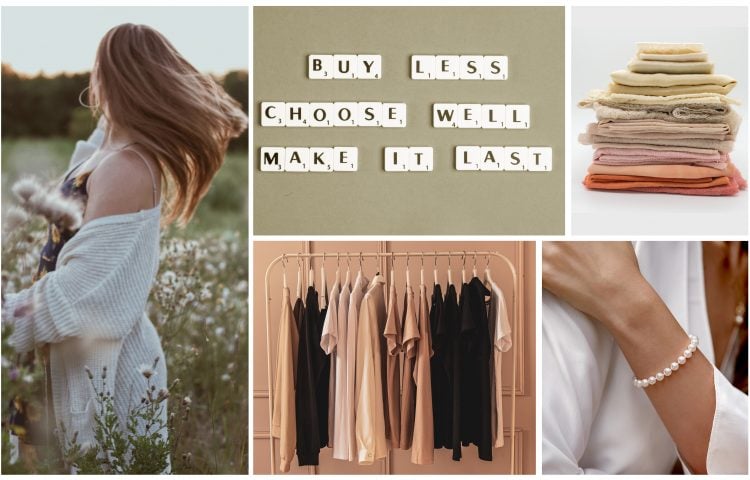Last Updated on August 24, 2023 by Carla Jonas
Estimated reading time: 28 minutes
100 billion pieces of clothing are produced worldwide each year and more than 15 million tons of used textile waste is generated in the United States alone. As a response to a trend-crazy world overwhelmed by the impacts of consumerism, slow fashion aims to refocus our energy towards shopping smarter, becoming more informed, and more mindful. Vivienne Westwood said it best: ‘Buy less, choose well, make it last.’ Simply put, slow fashion is a much-needed reaction to fast fashion.
Slow fashion is all about creating, as well as shopping for higher quality items that are designed to last. The growing movement encourages a variety of sustainable practices, including forming a connection with the environment and reducing toxins and waste. The principles of slow fashion include: sustainable materials, fewer collections, fair trade, minimizing waste, making great use of resources and transparency.
Familiar with the term ‘shopaholic’? In simple terms, a slow fashion convert is the exact opposite of that. Next, we’re tackling no less than 21 things you can do today to move from fast fashion to slow fashion. Every choice you make matters: from the clothes you pick to your earring types, shoes and bags. From the types of rings you wear to your staple wardrobe items. The good news is that everyone, regardless of budget, values and time constraints, can find ways to reduce their closet’s impact. Read on to find just what you can do – and how to do it – in simple, easy to-follow steps.
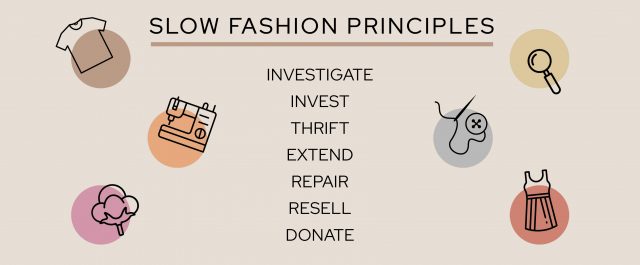
Slow Fashion – The Basics
Slow fashion is a concept that opposes fast fashion. The movement advocates for conscious production, distribution, as well as mindful consumerism, as a response to the fashion industry that is polluting and wasteful.
As opposed to fast fashion, slow fashion encourages initiatives to reduce the carbon footprint, child labor and other unethical industry practices. Moreover, sustainable fashion advocates for fair treatment, fair wages, good working conditions and fair trade. The use of sustainable and natural fabrics and conscious consumerism is encouraged.
Slow fashion garments predominantly come in natural and organic materials. The fabrics and the cuts are designed to last longer. In general, manufacturing slow fashion garments and accessories takes longer and the workers are paid fair wages, so the results are better quality-wise.
1. Treat Fashion Like Food to Avoid Waste and Toxins
We are what we eat – and we are what we wear. The easiest way to start on your slow fashion journey is to start thinking about your fashion choices the exact same way you think about your food choices and gain more information. Whether you are an avid label reader, eat exclusively organic or determined to shop smarter and aim for zero waste, the same principles apply to clothing. As a general rule, avoiding waste is imperative and just as important as making sure that you are not wrapping yourself in fabrics loaded with chemicals. Eco fashion respects ethical standards and uses mainly sustainable textiles. Here are some easy slow fashion principles and steps you can take in order to get you started:
- Read the labels in order to make sure they are of high quality, devoid of toxins (like synthetics, plastics and harmful dyes) and ideally organic.
- Similar to slow food, less means more when talking about slow fashion. This means fewer ingredients (instead of blends of 3+ fabrics) are preferable.
- Wasting food is definitely a no-go and so is wasting water. A single pair of jeans uses up to 10, 000 liters of water.
- Accept that just like good quality food, well-made clothes cost more.
2. Become a Smart Shopping Sherlock
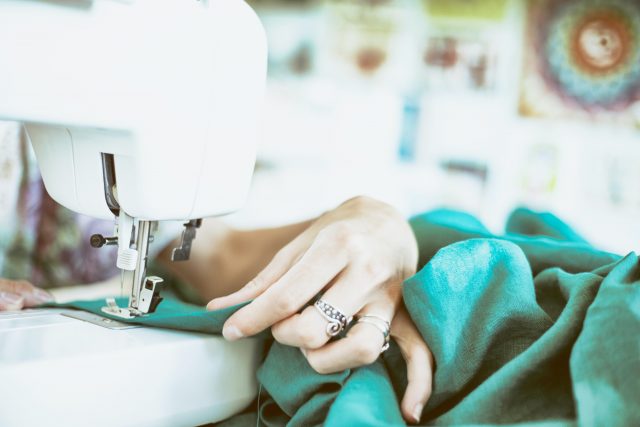
Basically, when it comes to slow fashion, investigate before you buy. And not lightly so, but in true detective fashion – pun intended. Be smart about it and leave nothing to chance. Becoming a ‘Shopping Sherlock’ overnight might seem a tad overwhelming, but be patient. Always remember that it’s called ‘slow fashion’ for a reason, and that it because it takes time. Finding your go-to slow fashion brand might take a little time, but it is easily doable through social media.
- Connect with ethical fashion brands on social media, ask questions about their company and products, materials, sources, and production process.
- Read the About Us page of the fashion brands you are interested in. The more details they have about their commitment to slow fashion, the better.
- Dig deeper: Are they a trustworthy slow fashion brand? Where does the fabric come from? Are they actively against fast fashion? How do they place in terms of environmental performance? Where are the clothes made?
- Look up their certifications. Specifically, check whether the natural fabrics you intent on buying come with the GOTS certificate, which means they are monitored in every step of the full supply chain.
3. Ditch the ‘Barely Wear’ Culture and Save Big
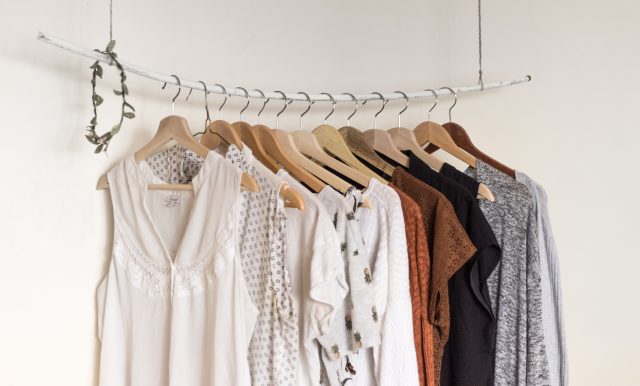
The Ellen MacArthur Foundation released a report titled, A New Textile Economy, which details that the amount of clothing produced has doubled since the year 2000. On the other hand, clothing utilization, meaning the number of times a clothing item is worn, has decreased by 36% in the recent years, according to the same report. The cause of all of these: the opposite of slow fashion, aka the ‘barely wear’ culture (also accurately called ‘throwaway fashion’). These stats are significant, especially considering that the overwhelming majority of these throwaway clothes are simply discarded and just around 1% is actually recycled. The past decade has been especially worrisome. According to a 2015 study by the British charity Barnado’s, a woman wears a clothing item just seven times before throwing it away. And, sadly, things looked far more optimistic 6 years ago than they do today.
- Passive, yet important slow fashion action: simply continue wearing the clothes you own and don’t shop for something new.
- Do not throw anything away for 6 months – then reevaluate the items in your closet. If closet space is an issue for you, there’s always the option of renting a small, 5×5 self storage unit. It will pay off in the long run, as it allows you to hold on pieces of clothing you are not wearing right now, for one reason or another, but might need again in the future.
- Only depart with a high quality item (by donating it or selling it) if you haven’t worn it in the past 2 years.
4. Slow Fashion Tricks: Apply the 30 Wears Test for Easy Decisions
Here’s a trusted method that provides great results. Livia Firth, the founder of Eco Age (a company involved in accrediting brands for their sustainability and slow fashion practices) came up with ‘The 30 Wears Test’, a great resource for fashionistas. She created her #30 Wears campaign to stimulate fashion lovers to ditch impulse shopping and to only buy a piece if they know they will wear it.
- Before purchasing, ask yourself: ‘Will I wear this jacket or this pair of pearl earrings at least 30 times?’ If yes, head to checkout.
- If the answer is ‘no’, resist impulse shopping. No need to invest in items that won’t last longer than a season in your closet.
- Your number doesn’t have to be exactly 30. You are free to choose your standard as you see accordingly, depending on your lifestyle and needs. The only thing you really do need to do is, whether you’ve set your limit at 25 or 50: stick with it as an etalon for great style investments.
- Alternatively, you can opt for made to order clothing. You will be supporting local businesses and making sure the item you end up with will be worn 30+ times. Made to order clothes from the local seamstress might take more time to make, true. But you get to be involved in the design process, pick your fabrics and avoid overcomplicated supply chains.
5. Declutter & Create a Slow Fashion Capsule Wardrobe
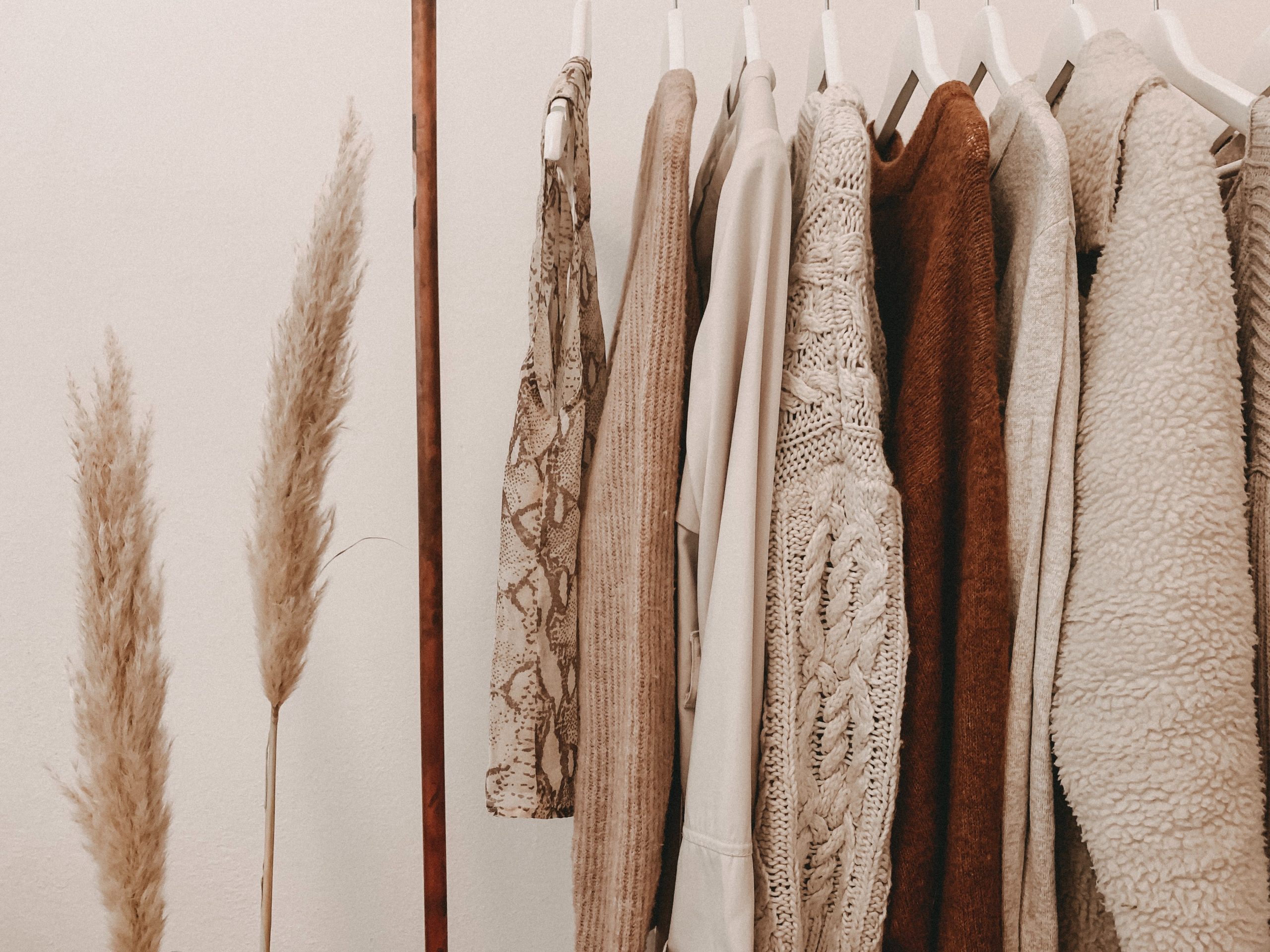
Many over-consumerism issues start from a problem with a very simple solution: disorganization. In fact, 10% of women admit that they feel depressed every time they open doors of their wardrobe. At the same time, 57% of women believe that an organized closet makes it easier and quicker to find what they need. Moreover, 1 in 9 women are late for work because they are not able to find an outfit to wear. Curating a capsule wardrobe filled with quality staples is the obvious answer to these problems. Plus, capsule wardrobes are definitely in line with the cornerstones of slow fashion.
- Curate a color palette based on your personal style and stick to it.
- Select a base color (common options include black, grey, navy or beige) and build on that.
- Keep all your basics in neutral shades and add up to 3 accent colors and a few patterns if desired.
- Capsule wardrobes that follow slow fashion fundamentals are not large in number – so always choose quality before quantity.
- Only shop for sustainable textiles and versatile pieces you can wear in multiple combinations.
- Add a few carefully selected jewelry pieces and accessories – think versatility and timeless appeal before all.
6. Break up with Bad Influence(rs) to Achieve Your Goals
Decluttering is a big part of embarking on a slow fashion journey – but it doesn’t just refer to decluttering your closet. Fact is, a reorganization of your interests and actions is due – and that starts with a social media cleanup. Although we’d like to think that we aren’t influenced by, well, influencers (they call them so for a reason), the studies say otherwise. 55.2% of Gen Z respondents found their inspiration for their most recent online fashion purchase on social media. At the same time, 50.6% of Millennials are guilty of the same thing (Retail Wire). How to break up with the social media stars that simply aren’t the best slow fashion role models? See our list below.
- Unsubscribe from newsletters from influencers and brands that promote fast fashion. Doing so will save you money and hours of mindless scrolling and keep you on track with the slow fashion movement.
- Unfollow influencers who promote trends and fast fashion on social media. Most influencers promote clothes that are not made of sustainable textiles and that are trend-based.
- Identify your impulse shopping triggers and remove them (e.g.: watching clothing hauls on YouTube, following celebrities who wear a clothing item just once and so on).
- Find new sustainable fashion influencers to follow – ones that will inspire you to shop sustainably and ethically.
7. Stick to Natural Fabrics to Reduce Chemicals

Reality check: our cheap clothes are toxic. Toxicity depends on many factors – such as the dose of the chemicals used in the manufacturing process, the type of dyes and exposure period. A wide range of clothing items, starting with denim dyed with cancer-causing chemicals to clothes labeled ‘wrinkle-free’ or ‘waterproof’ are notoriously toxic. Basically, far from sustainable fashion – and far from ethical fashion. But unpleasant chemicals can be found in everything from cotton (which is highly sprayed with pesticides) to, obviously, synthetic fabrics like polyester, nylon, acrylic, rayon and lycra. In addition to releasing micro-plastics, oil based synthetic materials are not biodegradable. Before you purchase a new garment, make sure to get informed about ecotextiles and natural fabrics. Here are some good options you can start incorporating in your wardrobe today:
- Linen – As one of the oldest natural fabrics used in clothing, linen is natural, safe, supple enough for clothing and made out of the flax plant, which takes months to grow.
- Organic Cotton – Unlike cotton (over 90% of regular cotton is genetically modified), the organic variety is not sprayed with pesticides. This means you, the workers and the local vegetation and animals are protected. Sustainable fashion goals: check!
- Wool – Produced naturally by sheep, goats and alpacas, wool is a great alternative for fall and winter clothing.
- Peace Silk – As the more eco-friendly version of silk, this luscious fabric is the result of a slow, natural production possible with the help of silkworms.
- Hemp – Closely related to linen, hemp has been grown for thousands of years, and it’s currently used in combination with cotton for a softer feel.
- Leather – Long-lasting and flexible leather can be produced and processed in different ways, with the most sustainable option being used or upcycled or leather.
8. Opt for Timeless Jewelry: ‘No’ to Fads, Yes to Classics

Slow fashion is not just about your clothes – it also pertains to the accessories and the jewelry pieces you choose. Rule number one: choose made-to-last, eco friendly and sustainable fashion jewelry and accessories. Make quality based choices whenever you are shopping for something new. It is always better to own a few things that you actually wear than own a massive amount of jewelry you do not like. Avoid mass production items or companies that sell cheap items in large quantities and opt for higher quality pieces that last a long time. Poorly made, trendy jewelry that loses its luster after a few wears is definitely a thing of the past once you’re committed to the slow fashion path. Here are some of the basic steps you can take in this direction.
- Invest in wardrobe staples and pieces without an expiration date – think quality over quantity.
- Avoid shopping trends and fading jewelry trends.
- Opt for locally crafted jewelry pieces that use premium materials designed to last longer.
- Choose natural over faux. Switch imitation jewelry for fine jewelry featuring natural gemstones.
- Choose designs that can be worn with a wide range of outfits, such as gemstone or pearl jewelry. Opt for classic stud earrings like ethically sourced diamond or pearl earrings, sleek hoops, a classic pearl necklace and elegant pendants. Single pearl necklaces, dangle pearl earrings and baroque pearls are all great additions if you favor the gems of the seas.
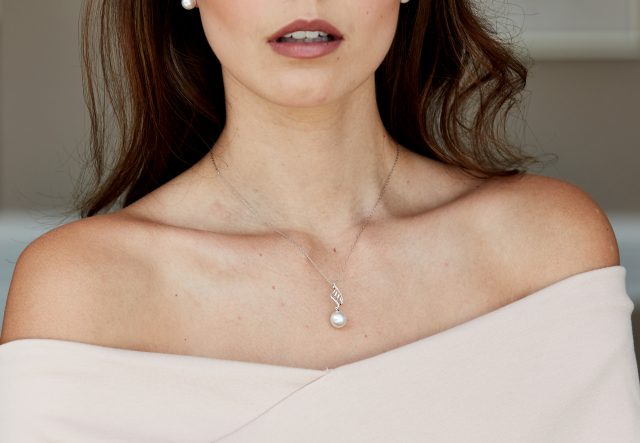
JEWELRY SPOTLIGHT:
A classic pearl pendant will take you from brunch to the office to the cocktail party with ease. Versatile, timeless, and far more than a trend, pearl pendants featuring precious gems like Freshwater Pearls, Tahitian black gemstones, Akoya gems or mother of pearl are pieces worth investing in. Plus, due to their classic appeal, they simply never go out of style. Shop our collection of Pearl Pendants featuring natural cultured pearls, designed to stand the test of time.
9. Ditch Impulse Shopping for a Shift in Mindset
Resisting the urge to impulse buy is no easy task. After all, fast fashion is fun and appealing – and the fashion industry can be very persuasive. But, good news, there’s definitely a way to tackle our shopaholic tendencies. Whether buying for the new season, updating your jewelry box with pink gemstones bling or tying the knot and shopping for your entire wedding arsenal, the urge to impulse shop is strong. Shopping for a new piece of clothing weekly instead of investing in versatile pieces is a root cause of fast fashion. Data shows that the average shopper will make no less than 3 impulse purchases in 4 out of every 10 store visits they make. Verdict: not very slow fashion friendly. And even more staggering: consumers spend roughly $5,400 a year on impulse purchases (CNBC). Here are 3 trusted methods to combat your impulses and shop smarter:
- Set a limit, such as buying one item a month. Doing this will force you to make sure that you are buying the best possible item out there and invest time and thought before purchasing.
- Alternatively, set a rule of waiting 24 hours before actually buying an item you desire. Fast fashion fades – and so will your desire to opt for it.
- Another method to ditch impulse buying is to calculate the item’s value in time. For example, if you make $30 / hour after taxes, that wool sweater is costing you 6 hours of work (and you get to decide if it’s worth it or not).
10. Take Care of Your Clothes to Make Them Last
One of the most important aspects of slow fashion is to make sure the garments you invest in will last for a long time. The fashion industry often makes sure that that won’t happen. But from religiously following the label instructions to natural ways to keep pests at bay, there is a wide range of methods and tips when it comes to making sure you’ll still be able to wear your favorite clothes in 5 years’ time. Here are a few of the sustainable fashion basics you can start applying today:
- Protect your clothes while cooking to avoid staining.
- Use a laundry bag for delicates to prevent potential damage.
- Always sort your laundry accordingly.
- Always make sure to respect the washing indications on the label.
- Wash clothes inside out to prevent distressing.
- Hang your clothes dry instead of using the tumble dryer.
- Natural fabrics (especially wool) attract moths, which you can combat by using cedar oil and lavender.
- Avoid over-washing – an essential slow fashion fundamental that is easy to do.
11. Slow Fashion: Thoughtful, Thrifting and Thriving
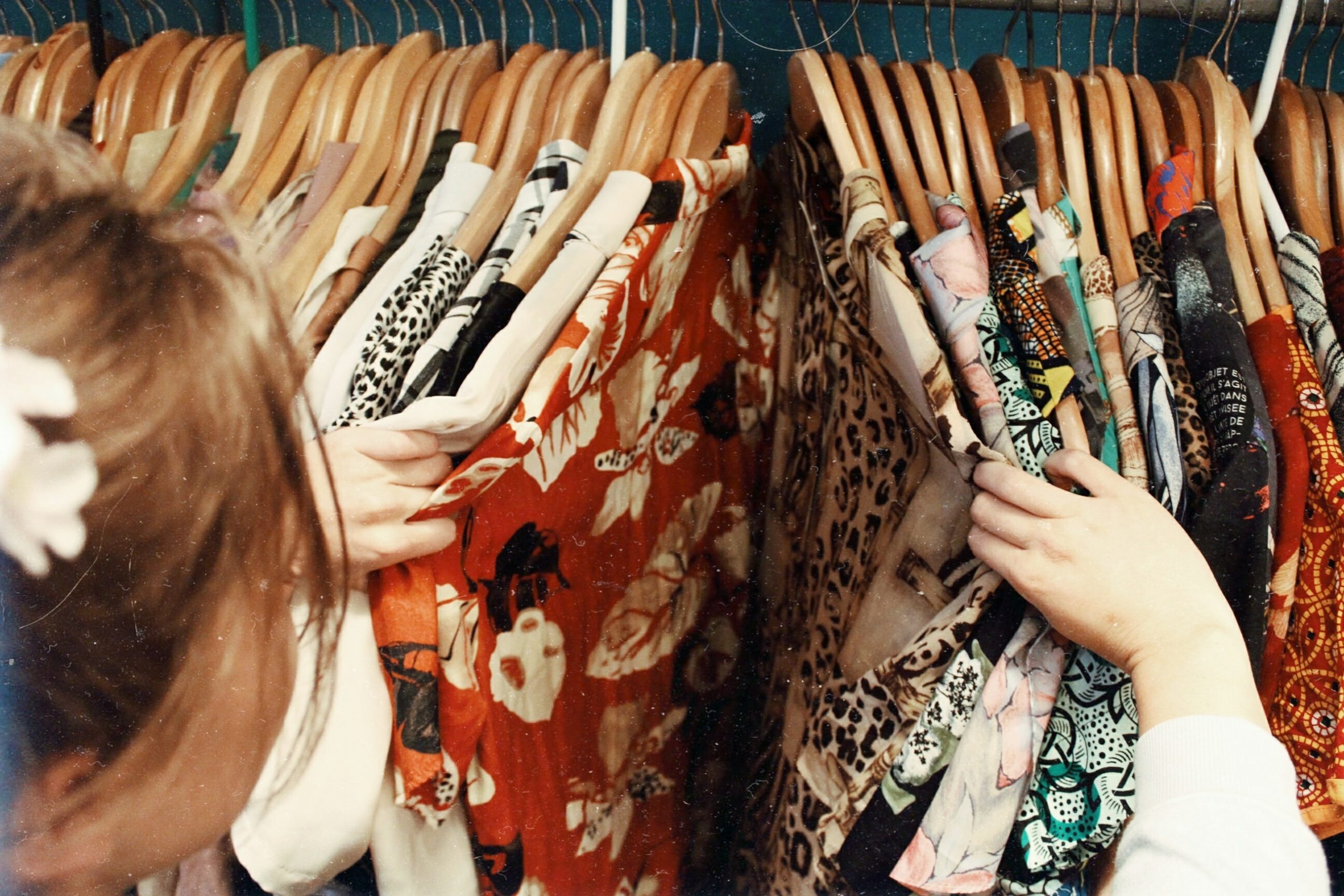
Big brands used to release 2 main collections every year: Spring/Summer and Fall/Winter. These days, the fashion industry is at an all time crazy peak. The facts: the big names are releasing a whopping 52 “micro-seasons” per year. In other words, we’re looking at one collection / week. Fact is, the fast fashion industry is designed to make you think you are out of style after just one week. New Gen Z aesthetics and trends pop up every day and this past years we’ve seen everything from cottagecore to fairycore to dark and light academia. Ephemeral trends are currently dictating purchasing habits. One of the easiest ways to refuse being part of the problem? Slow fashion solution: opting for second hand items and shopping at thrift stores. In with the old clothes, out with the new clothes! Going thrift shopping means you are actively keeping plastics out of landfills, as well as contributing to the decrease in demand for fast fashion.
- Go thrift shopping with a list in order to prevent impulse-buying and over-spending.
- Visit places like Vestiaire Collective, Tradesy or Rebelle for second hand designer fashion.
- Set a budget and don’t make excuses like ‘but it’s only $5!’. Buying items just because they are cheap is not in line with sustainable fashion principles.
- There’s a lot to choose from when thrift shopping, so prioritize quality natural fabrics and filling in the gaps in your wardrobe.
- A sustainable approach is to shop vintage leather in thrift stores instead of buying new and increasing demand.
12. Become a Renter, Not a Buyer
Overproduction is the root cause of many global issues. Poor working conditions, dismissal of fair trade practices, fair treatment and human rights, increased carbon footprint to mention a few. Plus, the issues of forced labor and child labor. As opposed to what you’d be advised when hunting for a home, when it comes to slow fashion or ethical fashion, it often makes sense to be a committed renter rather than a buyer. But how does this work and how often should you rent?
Becoming a renter will help in reducing the environmental impact of clothing production by up to 50%. That is a lot. Moreover, renting will allow you to save money and invest in what is essential. The bigger chunk of your budget should go into pieces you wear all the time instead of one-show ponies required exclusively for special occasions. Slow fashion and ethical fashion will definitely save you money.
- Figure out how many times you will be wearing a certain item you want to purchase.
- If the number is anywhere around 1-10 times, renting is the obvious solution.
- As a general slow fashion rule, aim to rent any piece you plan on wearing to a special occasion, such as a major milestone, anniversary or wedding. Investing money and closet space into an item that will sit and collect dust is not slow fashion-oriented.
- Opt for services like Renttherunway that allow you to still enjoy trendy designer rentals.
13. Don’t Buy Anything for a Month and Set New Goals
Buying clothes is a hobby for many – after all, treating fashion as a hobby is one of the causes of excessive production. This next tip does not involve you taking action – quite the contrary. Fact is, when it comes to slow fashion, some of the most impactful measures you can take is to appreciate what you have and curb your need wish for having more. As in more clothes. Or newer clothes. Or both. Here’s what you can do:
- Step one: don’t buy any clothing items, jewelry or accessories for a month.
- If you’re already shopping less than once a month, you’re on the right track. Set up a slow fashion goal that pushes you to go even further – such as not shopping for an entire season.
- While on your shopping break, identify whether your closet is actually lacking certain pieces (important, needs to be addressed). Or perhaps it’s just running low on ephemeral trends (unimportant, does not need to be addressed).
14. Think Trademark, Not Trend – And Perfect Your Style
Creating a uniform, a look that you feel great and confident in is a simple way to curate your wardrobe. Slow fashion is simple. And, more so, slow fashion is easy and effortless. After all, ethical fashion is designed to make things easier, definitely not harder. Simplifying your wardrobe to a few trusted staples will definitely reduce hassle, save you money and reduce the work you have to do every morning when deciding what to wear. Here’s how to tackle this slow fashion goal:
- Look through your closet, as well as through photos and figure out your ideal outfit, or your signature look (the outfit you’d happily wear every day).
- Start off with the goal of recreating different versions of your signature look for different occasions.
- Midi dress, a statement bracelet and denim jacket is your go-to? Then invest in a few quality maxi dresses for different occasions and ethically sourced denim outerwear.
- Consider your body type and what looks flattering on you when creating a signature look.
- Extend your list by building up on the silhouettes, lengths, and necklines you know work for you.
- Don’t forget the accessories and the sparkle: opt for sustainable backpacks, handbags and belts, plus ethically sourced jewelry.
15. Hygge Your Wardrobe – For the Ultimate Comfort
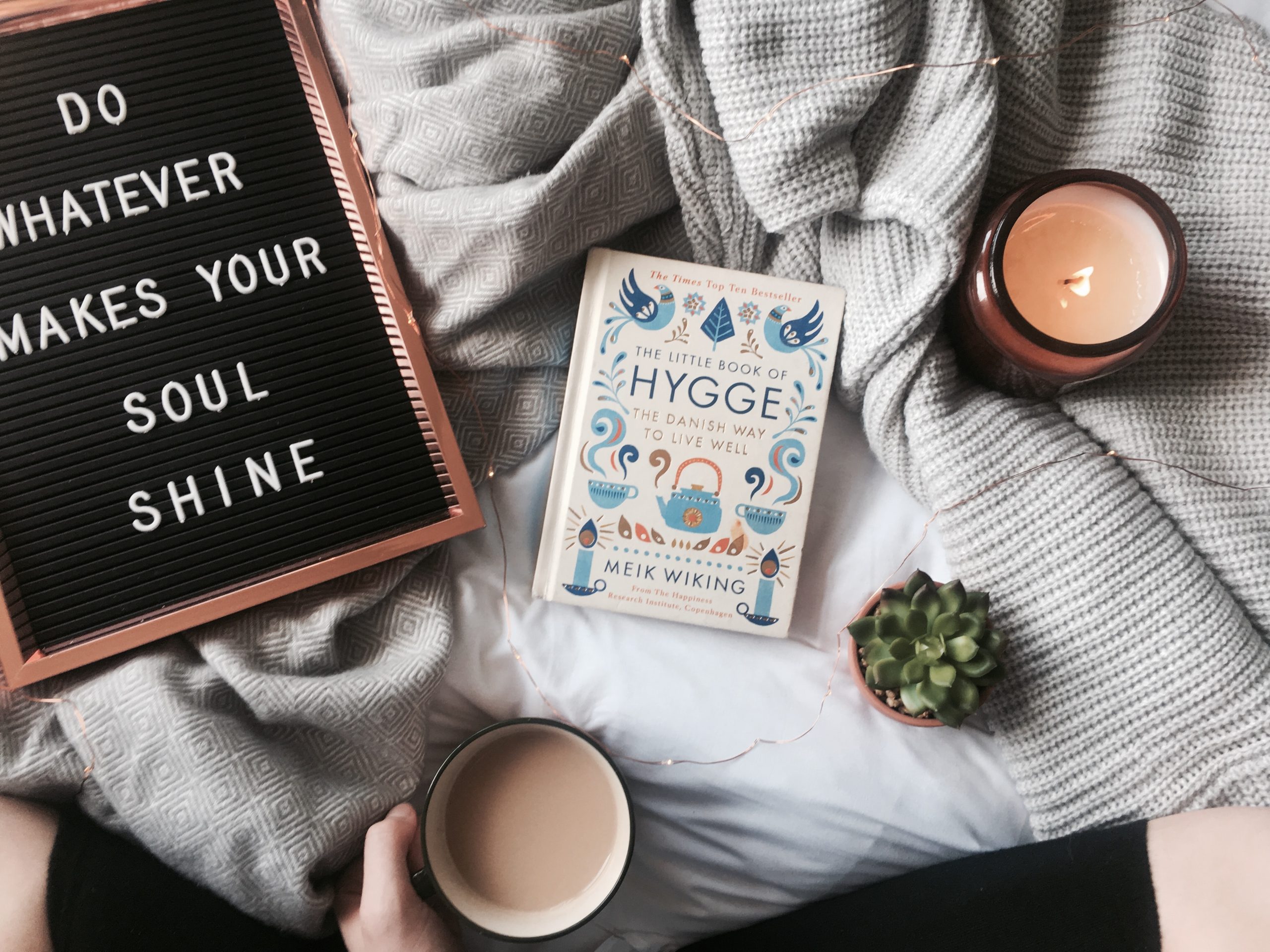
Hygge, or the Danish philosophy of happiness, centers around the idea of comfort and coziness. But more than anything, hygge defines the concept of slow, appreciative living – perfectly in tune with the slow fashion movement. Notice how ‘slow’ is once again the key word. The CEO of the Happiness Research Institute, Meik Wiking, explains how hygge is not just about making your home comfy. Basically, you can hygge anything, from fashion to your activities. Here are a few slow fashion principles to live by:
- When decluttering your closet, ask yourself: ‘Does this item bring me joy?’ before you decide to send it to its dedicated pile.
- Hygge is all about natural colors, natural fabrics and natural ambiance, which is very much in line with what slow fashion promotes.
- A hygge wardrobe is mostly focused on warm neutrals and soft textures, or clothes you simply feel comfortable and cozy in. Chances are, you will wear said comfy clothes for longer.
- Choose monochromatic garments in order to create a capsule wardrobe of endless possibilities.
16. Don’t Buy for the Season – Buy for Forever
This slow fashion method is especially useful when you live in a temperate climate, but it applies to all. Typically, a climate with changing seasons will require a wider variety of clothing items in your wardrobe, ranging from outfits designed for intense heat to snow-ready garments. By building up your wardrobe on the sustainable fashion principle that you should be able to wear it all year-round, you are not only saving money, but also production resources and reducing clutter and hassle. Maximize your conscious consumption potential by shopping for clothes you can wear during both the hot and cold seasons.
- Opt for trans-seasonal slow fashion clothes you can wear year-round: you will consume less and need less clothes.
- Master the art of layering. Start with your favorite tee and build up your outfit with a cardigan or pullover, worn under your jacket.
- Wear your summer dresses all year long by pairing them with warm tights, leggings and long boots for extra warmth.
- Before you purchase an item, think of ways of styling it throughout the 12 months of the year. If you can wear it for at least 8 months, it is worth investing in.
- In order for the above to be achievable, prioritize shopping for high quality materials.
17. Sell, Borrow, Trade, Tailor, Repair, Repurpose, Donate
Basically, do everything except throw away. Buying something new, the next shiny piece of clothing every week is unsustainable. The rule to live by when supporting the sustainable fashion industry: one, do not treat your clothes as disposable. Two, learn how to recycle clothes ecologically. Whether you choose to give your old clothes a new life, trade them instead of shopping for new or repairing them to enjoy them for longer, you are making a positive impact.
Our fashion consumption is off the charts. 75% percent of garments end up in landfills – and that translates to the equivalent of one garbage truck of textiles per second, according to the Pulse of the Fashion Industry 2018 Report. Just one of the repercussions of fast fashion and why we need to switch to ethical, slow fashion. Even more, the stats in the US are even more pessimistic, as clothes are worn only a quarter as much as the worldwide average (Ellen MacArthur Foundation).
- Sell – try platforms like ThredUp, Poshmark or Tradesy.
- Borrow – from platforms like Banana Republic Style Passport, Rent the Runway or Nuuly.
- Trade – using apps like This For That.
- Tailor – opt for a trusted tailor or learn how to adjust your clothes on your own.
- Repair – and enjoy your clothes for longer. The simplest and most budget friendly slow fashion action you can take today.
- Repurpose – transform your torn denims into shorts or a beach bag to give new life to old garments.
- Donate – use it as a last resort and let someone else enjoy your clothes.
18. Invest in Your Clothes to Create Emotional Bonds

The fast fashion stats and facts never cease to surprise. In the past 20 years, clothing utilization (the number of times a garment is worn) has decreased by 36%. At the same time, the amount of clothing produced has doubled. These fashion industry stats that reveal the problem of excessive production and mindless consumption aren’t encouraging – but there are things we can do in order to curb our appetite for new clothes. Slow fashion is all about not treating your clothes as disposable. The more you invest in your clothes, the less likely you are to throw them away after a few wears. There is a wide variety of things you can invest in the garments you wear, from money to time, dedication, skill and memories.
- Create memories in your clothes – meaning wear them instead of letting them sit on a shelf. A simple, self-evident slow fashion action: take your clothes out.
- Learn to sew or knit. Making clothes with your own hands will establish an emotional investment in your garments.
- Invest time researching the fashion brands that produce them, as well as shopping for the right pieces – this will also minimize your desire to replace them with the newer, shinier thing.
19. Watch Your Washing and Avoid Waste

Slow fashion and cheap materials do not get along. Greenpeace reports that between 60 to 80% of a garment’s environmental impact with toxic chemicals is a direct result of laundering. Fact is, synthetic materials such as nylon or polyester leach tiny microplastics into the water supply when washing a load in the washing machine. The textile waste ends up anywhere from the air to the water we drink, soil, and table salt. Moreover, besides the substantial positive impact on the environment, washing your clothes less will help them maintain their original shape for longer – which aligns with the prolonged wear principle of slow fashion.
- Only wash full loads instead of a couple of pieces in order to save water, as well as reduce the amounts of microplastics.
- Only wash clothes that are truly dirty and no longer pass the ‘sniff test’ – and not because of the social pressure to wash everything after wearing it once or twice, despite it being clean.
- Synthetic fabrics like polyester or nylon are prone to getting smelly faster, which is another reason why you should stick to natural fabrics from a trusted sustainable fashion brand.
20. Curate a List of Slow Fashion Brands for No-Hassle Shopping
Saying ‘Good Bye’ forever to your favorite fast fashion brands might be a little unrealistic – but the good news is that you don’t always have to. Simply choosing slow fashion brands and opting to shop from your favorite brand’s sustainable collections instead of choosing their cheaper garments is a step in the right direction. These days, many brands including big names are proving efforts towards creating clothes that last, made of natural or recycled materials. An even better ethical fashion option: support and shop from sustainable brands exclusively dedicated to the slow fashion movement. Luckily, sustainable fashion businesses and slow fashion are on the rise. Look for smaller slow fashion brands that offer small batches of their collections, but carefully sourced and curated.
- Shop the Right Brands: Some slow fashion brands include Mien, Eileen Fisher, Altar, The Tiny Closet, Not Perfect Linen, Pact, Terrathread, Patagonia, ABLE, KOTN, Fair Indigo or Cuyana, with many more out there.
- Shop the Right Collections: check out collections like The Circular from ASOS (as well as their wide range of organic cotton garments in an inclusive size range), Zara’s Join Life, Mango’s Committed or H&M’s Conscious and Premium.
- Purchase the Right Fabrics: choose linen, organic cotton, wool, cashmere, hemp and lyocell from your favorite stores while avoiding blends with synthetic fabrics.
21. Trigger That Paradigm Shift
Slow fashion takes time and a little effort – but it all begins with a paradigm shift and an understanding of the fashion industry. Similar to the slow food movement, slow fashion calls for a lifestyle change. And often times, what triggers that shift is knowledge and information. Eco fashion requires respecting ethical standards, using sustainable textiles, and promoting smaller producers. But it also needs quality based shopping habits. Assessing your current shopping habits and noticing the gaps and the aspects you are able to improve, as well as being aware of the impact your fast fashion clothes have is the first step towards slow fashion. A fashion revolution starts with a change in mentality.
- Make a list of a few things that motivate you to ditch fast fashion and move towards slow fashion.
- Make a list of all the benefits that come with shopping less and shopping smarter.
- Write down how much you spend on average on clothes every month and set more sustainable goals for the future.
- Watch documentaries – sometimes, all it takes for a full lifestyle change is watching the right documentary, so start with this list of recommendations.
Final Thoughts
The slow fashion movement is on the rise, gaining mainstream popularity in the recent years. As for the polluting fashion industry and fast fashion brands, the only way to go is down.
Your action plan on tackling the transition from fast fashion to slow fashion is complete. The future looks promising, but we all need to make small changes for a more sustainable fashion industry. We all hope for a world where toxic cheap clothing, excessive mass production, overcomplicated supply chains, textile waste, mindless consumption and polluting fast fashion brands will be a thing of the past.
Share with Us!
Before you hop on board of the slow fashion movement, remember that this is called a ‘slow fashion’ process for a reason – and that’s because it takes a lot of time. A lot of time researching ethical fashion, shifting your mindset, regrouping your wardrobe, organizing, decluttering, and getting used to new shopping habits. But we promise: similar to the slow food movement, once you get the ball rolling, there will be no turning back. On your to-do list today: start your slow fashion journey with a single eco friendly tip from our list above. And once you do, make sure to let us know how it’s going by leaving us a comment in the section below.
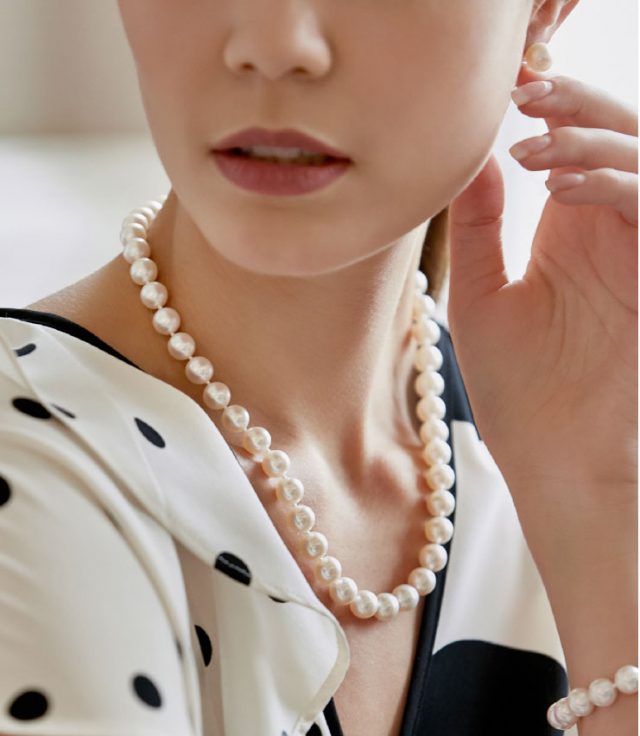
JEWELRY SPOTLIGHT:
If you’re decided to get started on your slow fashion journey and committed to never going back to fast fashion, a reorganization of your jewelry box is definitely due. After all, ethical fashion is all about better choices. By curating a collection of made-to-last jewelry and timeless classics and donating everything that is not designed to achieve those goals, you are already halfway there. And when it comes to bling, there’s nothing more timeless than elegant pearls and statement necklaces, perfectly paired with your arsenal of elegant rings, chic bracelet styles and dangle earrings. A classic white pearl necklace goes a long way in making you look chic in every occasion – and what’s better, it’s the kind of piece that doesn’t come with an expiration date. Shop our collection of Pearl Necklaces in lustrous white for classic, elegant pearls that last a lifetime.
- Your Ultimate Guide on the Coquette Aesthetic - April 8, 2024
- Strings Attached: Justin Timberlake Goes Pearlcore on SNL - January 31, 2024
- 39 Types of White Gemstones: Properties, Uses and Benefits - November 22, 2023

